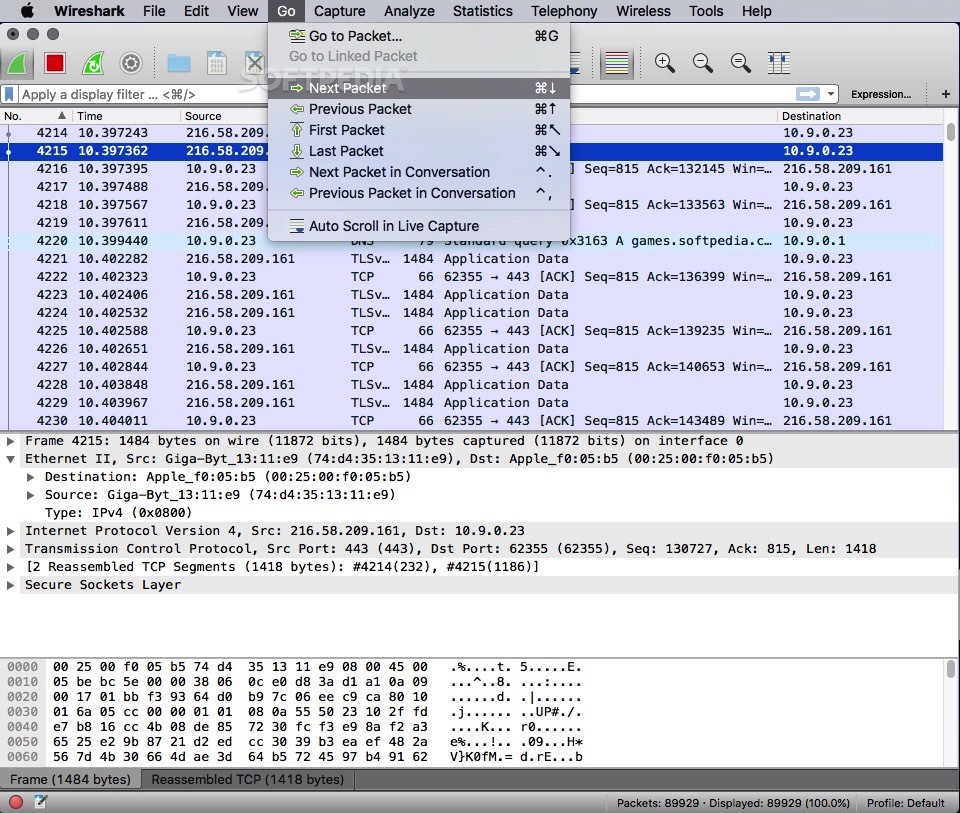

- #WIRESHARK XQUARTZ FOR FREE#
- #WIRESHARK XQUARTZ HOW TO#
- #WIRESHARK XQUARTZ INSTALL#
- #WIRESHARK XQUARTZ FULL#
Run wsl -set-default-version 2 to ensure Ubuntu will be installed under WSL 2. Otherwise, you have a Linux distro installed. If there is only “Docker Desktop” and “Docker Desktop Data”, you do not have a Linux distribution installed. Run wsl -l -v in the Command Prompt or Powershell. Do I have a Linux distribution (Linux distro) installed? This will run in an actual Linux VM, and you will run your Docker container within that VM (turtles all the way down for you!).
#WIRESHARK XQUARTZ INSTALL#
WSL should already be enabled after you install Docker, but you may still need to install a Linux distribution. To run the following steps in this lab, you will need to set up Windows Subsystem for Linux (WSL). Click for extra instructions for Windows-based systems Once this message goes away, your Docker has started successfully! You may see a message similar to “Your Docker is starting…”. On Windows or macOS, open the Docker Desktop application after it has been installed. On Linux machines, follow the instructions ().Ģ.

Download and install Docker Desktop, located (). () is one of the most popular container solutions and widely used in industry.ġ. Please make sure you follow the correct set of instructions for your platform. the system you are using to run the container, which is probably Windows, Mac OS, or Linux. Some of the configuration steps here differ based on your **host platform**, i.e. To run our environment, there are two components you need to configure on your host computer: **Docker**, the program that builds and runs the container, and an **X11 server**, which is responsible for displaying Wireshark’s window on your system. You can still develop for assignments on the department machines, but you will not have access to Wireshark. Otherwise, if access to a personal computer is an issue, please email the TAs list and we will work something out. If you already indicated that you don't have a personal computer for development on HW0, look for an email from us within 24 hours of the IP project release date with instructions. If you do not have a personal system to use, we will make sure you have a way to develop code for this course.
#WIRESHARK XQUARTZ FOR FREE#
For students who do not have access to their own laptop, note that the () provides laptops you can borrow for free You can also perform a number of analyses over different types of network connections (like TCP), which we will see later in the course. * **Wireshark is awesome.** Wireshark is a powerful debugging tool for building network programs: as you send packets over the network, you can view their contents and determine if they are formatted properly. Thus, you don’t need to log into the department machines to write/test your code! * **You’ll be able to develop locally.** With the container environment, we can specify a standard development environment you can run on your own machine, so your code can work on any system. Our container uses a few extra components compared to the CS300 container, so if you already have one from another course, you still need to set up this one. We are building on CS 300’s environment for this course (thanks, CS 300 course staff!). **Sound familiar?** If you’ve taken CS 300, you may have worked with a similar container setup before. When we grade your work, we will use the same container environment–so if your program works in your container, it will work in our grading environment. Wireshark is useful as a debugging tool, and a great way to learn about networks. In addition, we will set up some additional tools to allow you to run Wireshark, and industry-standard packet capture tool, from inside your container. This container runs a Linux-based operating system, **Ubuntu 20.04**.
#WIRESHARK XQUARTZ FULL#
We will provide our environment using a **container**, a technology that provides an abstraction of a separate OS without the full overhead of a Virtual Machine (VM).
#WIRESHARK XQUARTZ HOW TO#
This guide will demonstrate how to set up the tools and development environment we will use for the remaining projects in this course.


 0 kommentar(er)
0 kommentar(er)
